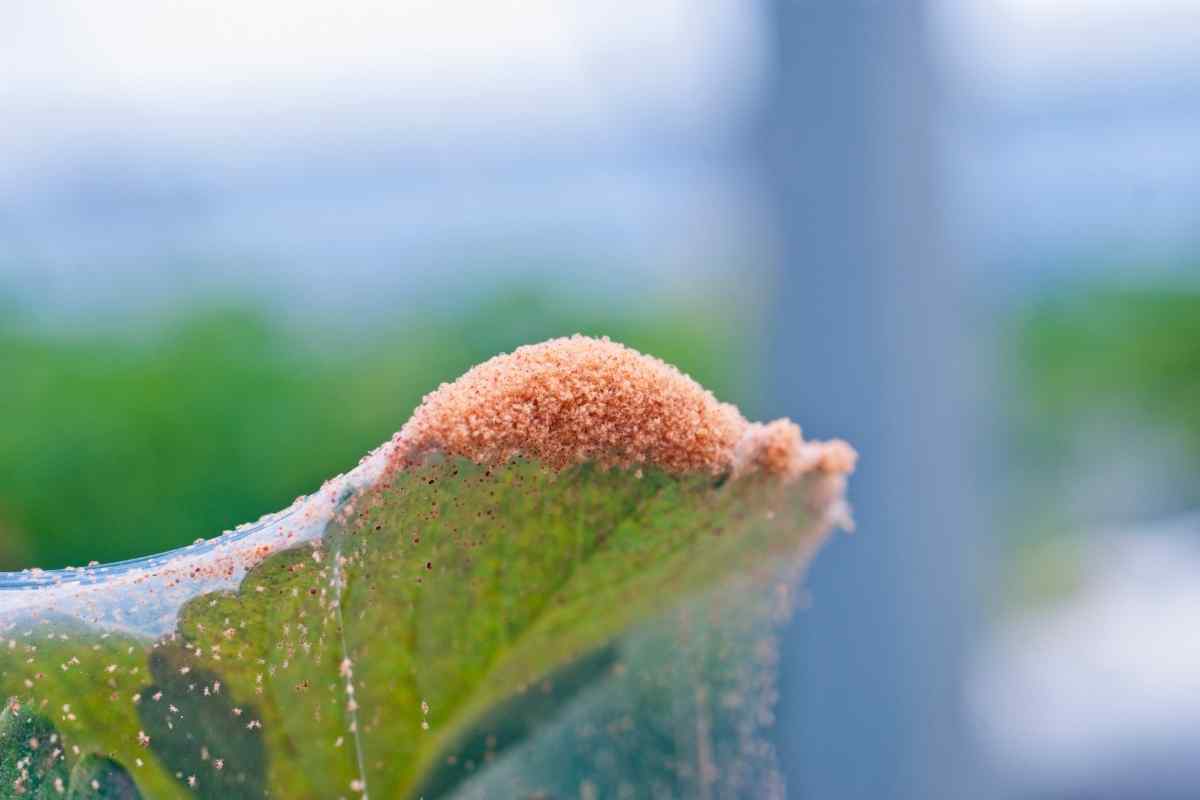If you are wondering “are red spider mites harmful to humans?”, after reading this article you’ll know that the only thing that red spider mites are harmful to are the plants in your house, garden, and greenhouse.
These little mites are distinct from the red mites that can make the lives of backyard chickens hell, or the mites that bite or cause itching in humans.
Want to Know More about Spider Mites?
In this brief article, we will equip you with the essentials of identifying and tackling the red spider mite, including effective 100% organic methods of eradication and the preventative steps you need to stop spider mite infestation from taking hold.
Red Spider Mites Are Not Actually Red
This is the first thing you need to know, otherwise, you’ll be hunting for little red critters on your plants!
These tiny arachnids formally named Tetranychus urticae or the two-spotted spider mite are not red.
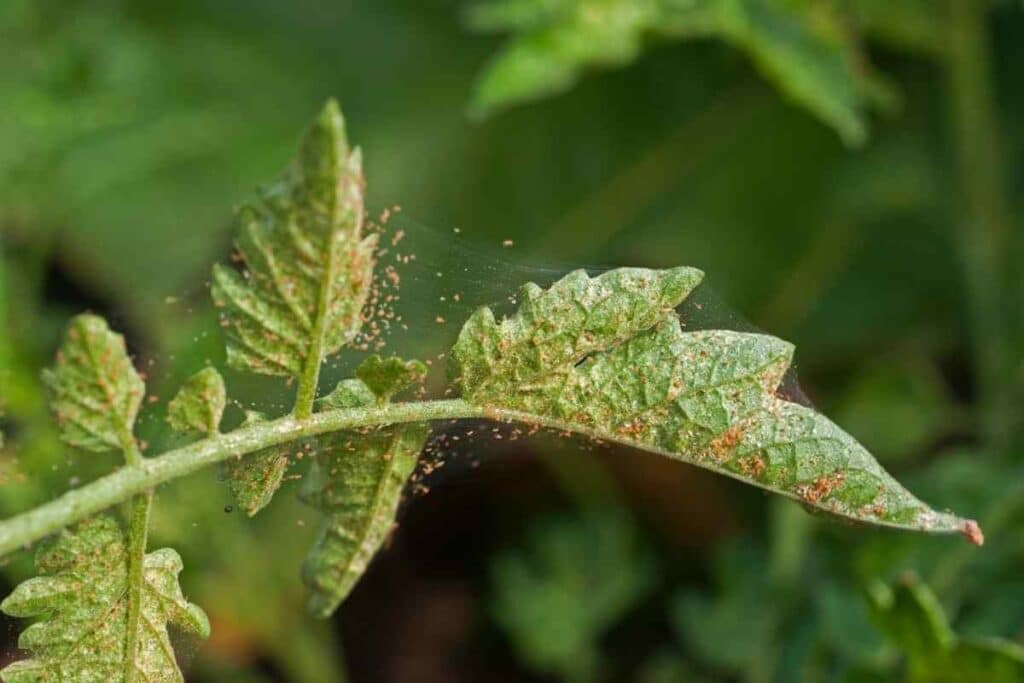
They tend to be a green-yellow with two dark patches. They are tiny arachnids, rather than insects, and always less than 1 millimetre in length.
To see these mites in action you will need to use a magnifying glass, though you may be able to see the fine webs they spin to attach their eggs to the underside of leaves.
Red Spider Mites Are Primarily a Plant Pest
These mites can cause serious problems for agriculturalists, gardeners and plant owners.
This is because of their voracious appetite for just about any plant they can access in the hot dry conditions that they prefer.
Targets for the red spider mite include:
- Potatoes
- Tomatoes
- Peas
- Aubergine
- Maize
- Strawberries
- Roses
- Wheat
- Clover
- Coffee
- Cotton
Their propensity to infest fruits and crops means that they can do significant economic damage.
In economies that are heavily reliant on agriculture like Australia and South Africa, this pest that is originally native to South America is classed as a biosecurity risk.
The Red Spider Mite Has Mouthparts That Are Specifically Designed to Eat Sap
Red spider mites have piercing, sucking mouthparts that can easily penetrate the cell wall of plant cells and suck them dry of juices and nutrients.
As they feed they fill up with sap and produce a sticky, sweet excreta called honeydew, which can also cause problems for the plant.
They will feed on plants cell by cell and when populations of this pest are large, an initially thriving plant can soon be overwhelmed.
Their Rapid Lifecycle Means That Red Spider Mite Populations Can Scale Quickly
These little arachnids can multiply quickly because they pass through their life stages quickly.
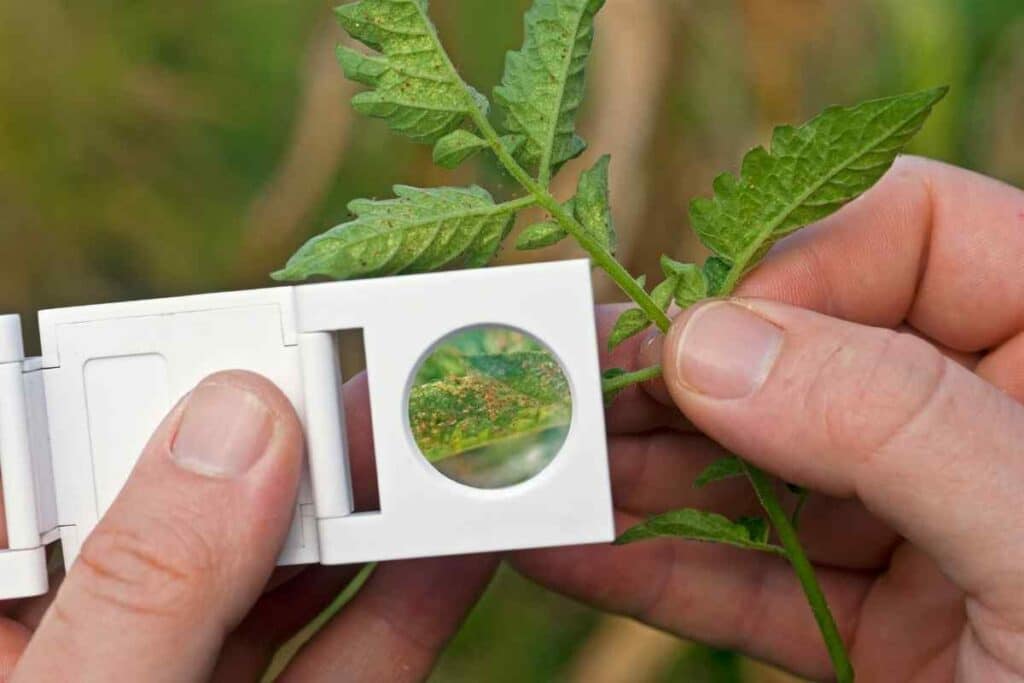
This means that their population grows fast, leading to their webbing on the underside of leaves being visible to the naked eye.
Females lay up to 200 eggs in their lifetime. These minuscule eggs are less than 0.1 millimetres in size and white-orange. The eggs hatch to produce larvae that have three pairs of legs.
The larva will pass through two nymphal stages where they gain an additional pair of legs and gradually change colour.
The Size: An adult female is half a millimetre in length with blotches on each side of her body. Males are usually slightly smaller.
Need-to-know Signs of Red Spider Mite Infestation
Because red spider mites are such active feeders, they can affect all parts of a plant that are above ground, with a preference for young, tender growth.
Initially, there is no sign of the presence of these mites but as the mite population grows the damage rapidly progresses, with plants dying from the infestation within a month.
The key signs of plant damage by red spider mites include:
- Whitened or yellowing leaves
- Speckled leaves
- Black sooty mould
- Loss of plant height and vigour
- Reduced crop yields
- White webs on the plants
- Mites and their eggs visible under magnification
Tackle Red Spider Mites Quickly to Bring an Infestation under Control!
Because the red spider mite has a propensity to feed on a wide range of plants, it’s difficult to eradicate once it becomes established.
Thankfully, the red spider mite has several natural predator species that can be used to control it. It is also responsive to topical applications of a variety of substances.
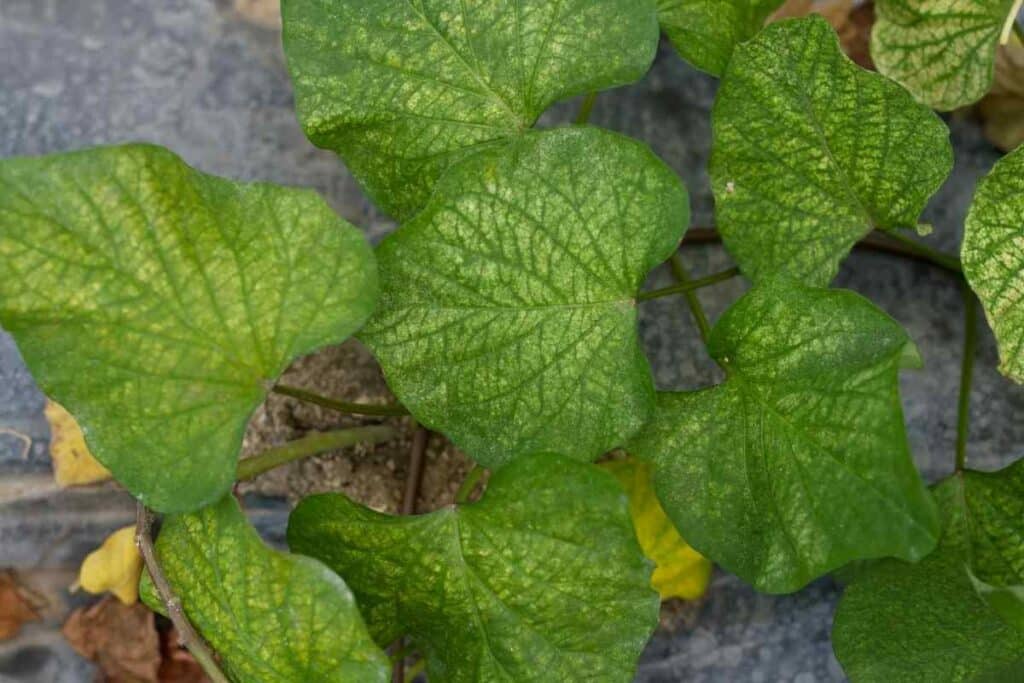
Interestingly, organic methods of eradication are probably best for tackling the red spider mite as insecticides will not only kill its natural predators but also carbaryl insecticides are capable of increasing the nitrogen content in leaves and inadvertently boosting the red spider mite population.
The high turnover of these mites also increases the chance that the mites will develop resistance to a pesticide preparation.
Natural Predators of the Spider Mite
Red spider mites in your garden are probably already being eaten by natural predators.
You can purchase predator species to introduce to your garden as control or deterrent.
These are the main ones:
- Phytoseiulus persimilis is a predator mite that will aggressively hunt red spider mites, from eggs to mature males and females
- Amblyseius mites are another predatory mite species that can be used to control this pest. They offer year-round predation, which can be beneficial in tackling red mite numbers before they increase in the summer.
- Feltiella acarisuga, a predatory larvae, targets sap-sucking plant pests.
- Atheta coriaria is a rove beetle that targets spider mites alongside its diets of gnats and thrips.
- Ladybirds and lacewing larvae are also known predators of this mite.
Use These Sprays to Get Rid of Red Spider Mites
You can tackle red spider mites using simple organic sprays including ingredients like:
- Neem oil
- pyrethrum
- fatty acids
- and even water
Prevent & Keep Spider Mites Under Control
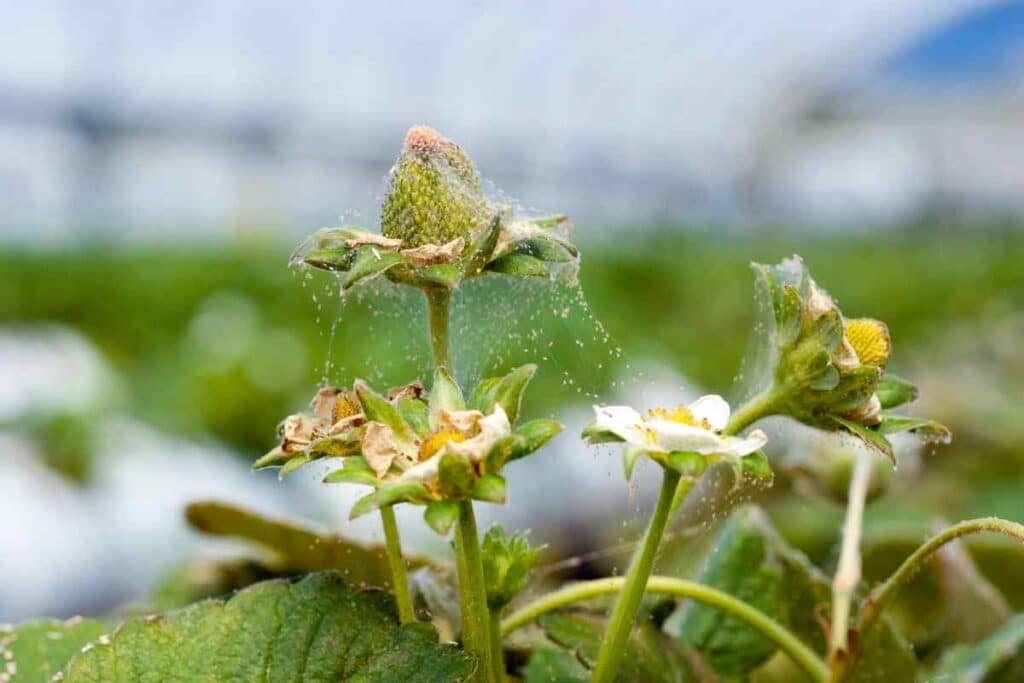
Keep spider mites under control by taking the following steps:
- Increase humidity: red spider mites hate humidity, so misting down your plants with water can act as a deterrent.
- Remove affected plants: quarantine infested plants to prevent the mites from spreading to other plants.
- Prevent overwintering: You can target overwintering spider mites by removing plant debris, stakes and dead leaves well ahead of spring. Treat your greenhouse with a glasshouse disinfectant to ensure it remains safe for your plants.
- Cultivation may be key: removing weeds and dead plants can prevent red spider mites from spreading or overwintering in your garden.
Rounding Up
The red spider mite is a common garden pest, but is not harmful to humans, being able to recognise the mite and signs of its infestation will help you take prompt action to keep it at bay with a variety of organic-friendly methods.
You Might Also Want to Read
- How to Get Rid of Worms In Potted Plants
- Can You Drown Aphids? (Get Rid of Them from Your Backyard)
- Where Do Tomato Hornworms Come From?
